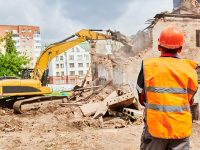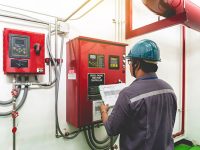Introduction
 In South Australia, work health and safety (WHS) are a prime concern. While the common goal of businesses is profitability, the drive to make the workplace safe must never be neglected as manpower is a vital asset to your company.
In South Australia, work health and safety (WHS) are a prime concern. While the common goal of businesses is profitability, the drive to make the workplace safe must never be neglected as manpower is a vital asset to your company.
The government has its laws in place to enforce WHS in business premises. That is why all businesses – whether small, medium, or large scale – must be ever prepared for WHS inspections.
The WHS audit will help ensure that all activities and efforts inside your company are aligned to acceptable WHS standards, guaranteeing the safety, protection, and welfare of the whole organisation.
The Purpose of a WHS Audit
The main purpose of the WHS audit is to gauge your company’s compliance with WHS standards. Safety audits will help your company to:
-
Determine the strengths and weaknesses in your safety procedures.
-
Discover risks associated in the workplace and the controls needed to be in place.
-
Identify specific parts of the process that need improvements.
-
Discover if your existing resources are sufficient to allow a healthy and safe workplace.
-
Expose unsafe practices and how to implement controls to prevent them.
The Facets of a WHS Audit
In this article, we will cover some facets of a WHS audit based on the Work Safety and Health Act and the things you, a person conducting a business or undertaking (PCBU), need to prepare when an audit comes. To grasp the full details, you might need to study and internalize the Act itself. The different facets are as follows:
Hazard Management
Your business must have a risk management system to determine the risks associated with any type of activity as well as its corresponding preventive controls. You can follow this 4-step process in analyzing risks:
-
Hazard Identification
Examine all the things and situations in your operations that could harm people. Hazards usually occur from the following aspects:
-
-
-
Equipment, materials, and substances used
-
Physical work environment
-
Work design and management
-
Work tasks and their methodology
-
-
Below are examples of hazards involved in the workplace, depending upon the nature of your business:
-
-
-
Gravity
-
Manual activity
-
Electricity
-
Psychosocial
-
Hazardous chemicals
-
Machinery and Equipment
-
Extreme temperatures
-
Biological
-
Radiation
-
Noise
-
-
-
Hazard Analysis
After identifying the possible hazard, you need to determine the severity of the risk and the probability of it happening again. This is also the point where you determine if the preventive control you have established is effective to prevent or minimize the hazard.
In studying the likelihood of the harm occurring, ask the following questions:
-
-
-
How frequent is this activity done? Will this make the harm to occur more frequently or less?
-
How frequent are the people in proximity to this hazard?
-
Is there a history of this hazard in your workplace?
-
-
A discussion of these probing questions will generate more ideas on how to enhance the prevention of the hazard.
-
Hazard Control
The most important part of hazard management is to eliminate all the risks if reasonably practicable. If not, then you are to minimise it.
When you say reasonably practicable, it means taking into consideration the following matters:
-
-
-
The probability of the hazard occurring
-
The extent of harm the hazard could inflict
-
Information about the hazard and how to eliminate it
-
Availability of resources to eliminate the risk
-
-
-
Review
The preventive controls you have placed must be reviewed frequently to gauge their effectiveness. Never wait for something bad to happen.
You may need to review the process if a control measure is not successful in controlling the risk. Check also for other forms of hazards that need to be addressed.
Codes of Practice
 A Code of Practice does not supersede safety and health laws but complements them. They are viable sources of information for effective safety and health practices. Even though they do not replace the standard laws, they are still admissible in court proceedings, based on the WHS Act. With this, it is important that as a business owner, you have to study and implement the applicable practices stated in the code.
A Code of Practice does not supersede safety and health laws but complements them. They are viable sources of information for effective safety and health practices. Even though they do not replace the standard laws, they are still admissible in court proceedings, based on the WHS Act. With this, it is important that as a business owner, you have to study and implement the applicable practices stated in the code.
South Australia has already approved several topics under the Code of Practice. Some of these topics are abrasive blasting, confined spaces, asbestos management, noise management, and managing electric risks in the workplace. You can see the full list of the approved topics here.
Incident Investigation and Notification
In the event of serious accidents or injury in the workplace, you as the PCBU are responsible for investigating the situation and the circumstances that led to the event. The objective is not to blame anyone but to establish control measures to prevent future similar incidents. Your business must have a notification system ready all the time. Notifiable incidents could be any of the following:
-
Death of a person
-
Serious injury or illness
-
Dangerous Incident
You must notify the regulator immediately after being notified of the notifiable incident either through written or telecommunication.
To properly report and investigate the incident, the following system could be observed:
-
-
Assist
-
The injured person must immediately receive appropriate first aid or treatment.
-
-
Notify
-
Notify the regular immediately for serious injuries or incidents.
-
-
Secure
-
The scene must be secured and undisturbed to ensure that the injured person is assisted well and the scene is free from substances or material that can cause additional harm.
-
-
Collect
-
Collect all the evidence in the incident scene to gather information about the incident.
-
-
Cooperate
-
Coordinate with inspectors and emergency personnel in the gathering of pieces of evidences.
-
-
Report
-
Based on data gathered and careful analysis, make a detailed report.
Emergency Plans
You should have an emergency plan in place which will include the emergency procedures, testing or drills of the said procedure, and proper information dissemination to the workers on how to carry out the procedure.
Work Group, Health and Safety Representatives & Committees
Work Group
Before selecting one or more Health and Safety Representatives (HSR), the work group must be formed first. This team will ensure that the HSR is competent to represent group members.
Health and Safety Representative
An HSR must be elected in your company to represent workers regarding health and safety. This position is voluntary and very essential in voicing out the health and safety concerns of the employees for a more cohesive approach in implementing a quality WHS.
Health and Safety Committee
If the HSR’s focus is on representing the workers, the committee’s job is to see the company as a whole. This group will become your go-to guys when it comes to WHS concerns.
Personal Protective Equipment
Commonly abbreviated as PPE, this refers to any equipment or clothing a worker uses to minimise the risks affecting safety and health. The common PPE’s are boots, earplugs, face masks, gloves, goggles, hard hats, and so on. The lineup of PPE’s will depend on the nature of business you are running, the type of machine and equipment you are using, and the materials and substances your worker might get exposed to.
Other Facets
Other facets that are worthy of taking note of are the following. These points are well discussed in the Work Health and Safety Act.
-
Authorisations
-
Consolation, Representation, and Participation
-
Issue Resolution
-
Cessation of Unsafe Work
-
Provisional Improvement Notices
-
Discriminatory, Coercive, and Misleading conduct
-
Workplace Entry
Conclusion
In the pursuit of achieving your organisation’s objectives, always take into account the welfare of your workers. The WHS audit is an indispensable tool to help you improve the overall health and safety of your workplace, consequently boosting your worker’s morale. When you take care of your people, they will take care of you.




